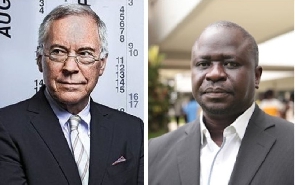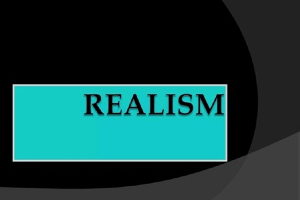Professor Steve Hanke, a professor of applied economics, Johns Hopkins University has stated that it is wrong for the Ghana Statistical Service to claim that his measurement of Ghana's inflation has a "major weakness". According to him, Professor Samuel Kobina Annim, the government statistician, has to spend some time with scientific literature. "Ghana Statistical Service statistician Samuel Kobina Annim claims that my measure of inflation for Ghana has a "major weakness." Wrong. Prof. Annim should spend some time with the scientific literature... "Ghana Statistical Service statistician Samuel Kobina Annim casts doubt on my measure of Ghana's inflation rate. Today, using the tried-and-true purchasing power parity method, I measure inflation in Ghana at 98%/yr. Annim should take notes," Prof. Steve Hanke tweeted on Saturday, October 15. Prof Samuel Kobina Annim cautioned Ghanaians against comparing the Statistical Services inflationary figures with that of popular US Professor Steve Hanke. He told the media at the October briefing on the nation’s inflation that the CPI method adopted by the Statistical Service is consistent with international practice and superior to Prof Hanke’s Purchasing Price Parity Module (PPPM), adding that Prof Hanke’s PPPM is only based on the exchange rate. “Steve Hanke’s approach is not based on the consumer price index, Steve Hanke’s approach is based on the purchasing power parity. Underlying the purchasing power parity is the assumption that price differences between [the] two countries are only the exchange rate. “The key difference here is that the CPI approach necessarily requires that you collect data on three variables: prices, quantities and the expenditure weight of these items, and this is at sharp variance with Steve Hanke’s purchasing power parity. “The premise of the computation both from a data point of view and a scope of data point of view are not the same, so we need not make an attempt to compare that,” Prof Annim explained.
Ghana Statistical Service statistician Samuel Kobina Annim claims that my measure of inflation for Ghana has a "major weakness." Wrong. Prof. Annim should spend some time with the scientific literature. He should start with Hanke-Bushnell, linked here: https://t.co/9o7UWLeKqM— Steve Hanke (@steve_hanke) October 15, 2022
Ghana Statistical Service statistician Samuel Kobina Annim casts doubt on my measure of Ghana's inflation rate. Today, using the tried-and-true purchasing power parity method, I measure inflation in Ghana at 98%/yr. Annim should take notes. https://t.co/OBOTYrXp8B— Steve Hanke (@steve_hanke) October 15, 2022 Ghana's inflation rate Ghana's inflation rate according to the Ghana Statistical Service has moved from 33.9 per cent in August 2022 to 37.2 per cent in September 2022. This is a 2.0 per cent month-on-month increase from the 33.9 per cent rate recorded in August 2022. However, the rate is also 37.2% higher than that of September 2021. Year-on-Year inflation varied upwardly by 2.2 percentage points between August (31.7%) and September (33.9%) 2022. Food inflation was 37.8% while non-food inflation was 36.8%. Inflation for locally produced items was 35.8% while inflation for imported items was 40.7%. Western Region recorded the highest food inflation (47.0%) and Eastern Region, the highest non-food inflation (42.0%). Eastern Region recorded the overall highest inflation (41.0%) followed closely by Western Region (40.2%) and Greater Accra Region (39.3%). Transport (68.7%) recorded the highest rate of inflation in the Eastern Region, for food inflation in the Western Region, Fish and Other Seafood had the highest rate of inflation at 64.0%. PEN Watch the latest episode of BizTech below:
Business News of Sunday, 16 October 2022
Source: www.ghanaweb.com
'Spend some time with scientific literature' - Prof. Hanke tells government statistician
Entertainment












